Yingge Liu
One-Stage Deep Edge Detection Based on Dense-Scale Feature Fusion and Pixel-Level Imbalance Learning
Mar 17, 2022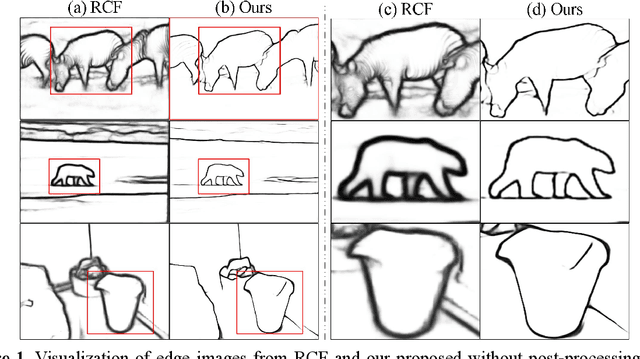
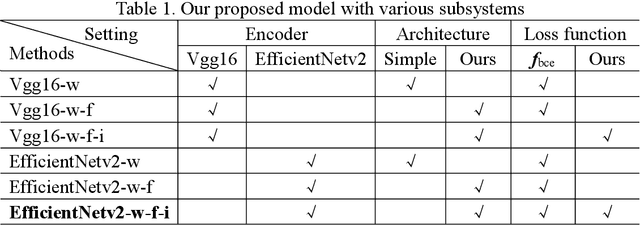
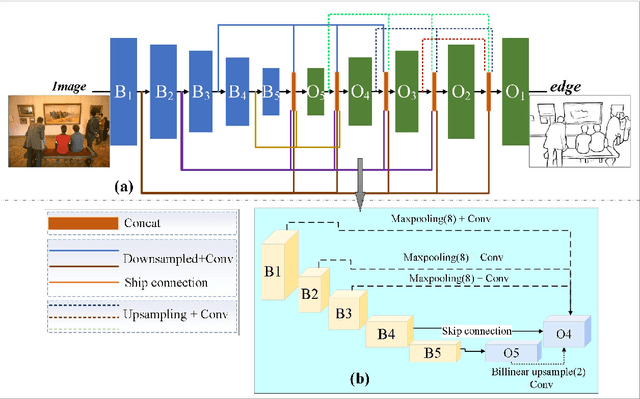
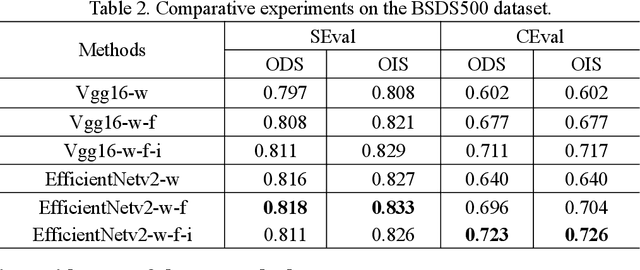
Abstract:Edge detection, a basic task in the field of computer vision, is an important preprocessing operation for the recognition and understanding of a visual scene. In conventional models, the edge image generated is ambiguous, and the edge lines are also very thick, which typically necessitates the use of non-maximum suppression (NMS) and morphological thinning operations to generate clear and thin edge images. In this paper, we aim to propose a one-stage neural network model that can generate high-quality edge images without postprocessing. The proposed model adopts a classic encoder-decoder framework in which a pre-trained neural model is used as the encoder and a multi-feature-fusion mechanism that merges the features of each level with each other functions as a learnable decoder. Further, we propose a new loss function that addresses the pixel-level imbalance in the edge image by suppressing the false positive (FP) edge information near the true positive (TP) edge and the false negative (FN) non-edge. The results of experiments conducted on several benchmark datasets indicate that the proposed method achieves state-of-the-art results without using NMS and morphological thinning operations.
Multi-granularity Association Learning Framework for on-the-fly Fine-Grained Sketch-based Image Retrieval
Jan 13, 2022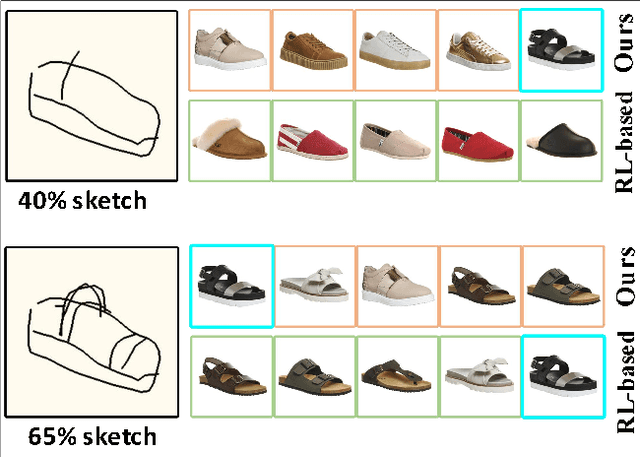

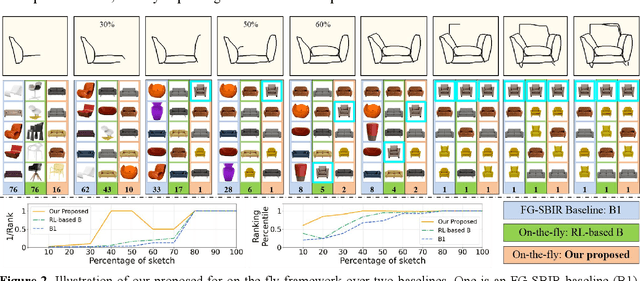

Abstract:Fine-grained sketch-based image retrieval (FG-SBIR) addresses the problem of retrieving a particular photo in a given query sketch. However, its widespread applicability is limited by the fact that it is difficult to draw a complete sketch for most people, and the drawing process often takes time. In this study, we aim to retrieve the target photo with the least number of strokes possible (incomplete sketch), named on-the-fly FG-SBIR (Bhunia et al. 2020), which starts retrieving at each stroke as soon as the drawing begins. We consider that there is a significant correlation among these incomplete sketches in the sketch drawing episode of each photo. To learn more efficient joint embedding space shared between the photo and its incomplete sketches, we propose a multi-granularity association learning framework that further optimizes the embedding space of all incomplete sketches. Specifically, based on the integrity of the sketch, we can divide a complete sketch episode into several stages, each of which corresponds to a simple linear mapping layer. Moreover, our framework guides the vector space representation of the current sketch to approximate that of its later sketches to realize the retrieval performance of the sketch with fewer strokes to approach that of the sketch with more strokes. In the experiments, we proposed more realistic challenges, and our method achieved superior early retrieval efficiency over the state-of-the-art methods and alternative baselines on two publicly available fine-grained sketch retrieval datasets.
 Add to Chrome
Add to Chrome Add to Firefox
Add to Firefox Add to Edge
Add to Edge